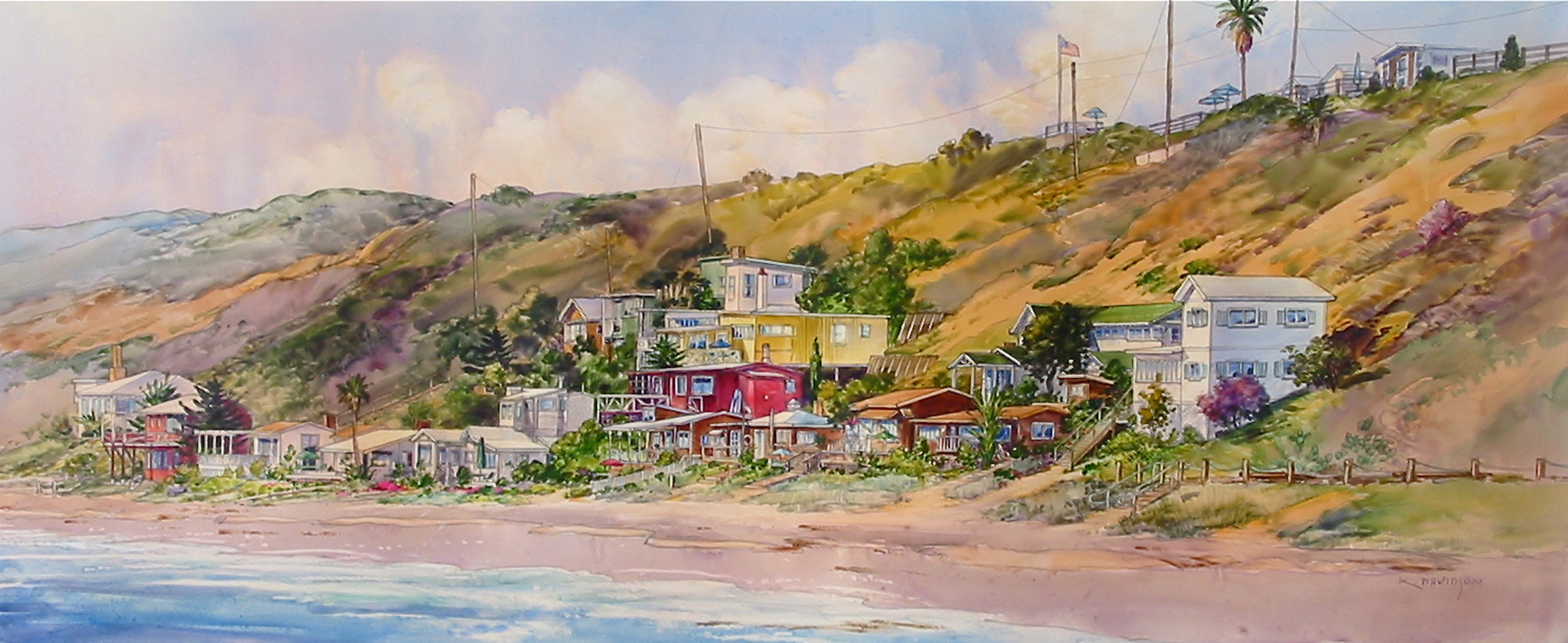
Local interior designer Donna Whelan will be holding a workshop today at 2:30 p.m. at AHarvestofHope.com home and garden event in Newport Beach. She will be sharing her green approach to redecorating and rebuilding, and the challenges and joys of designing sustainably. I had the opportunity to sit down with her and chat about her elegantly relaxed approach to interior design.
Q: How would you define your green approach to redecorating and rebuilding?
A: My approach is to recycle anything I can along with meeting the client’s needs. All my clients don’t have to be green. Some of them just want a redecoration of their house, so I encourage them to use what they have and to think about something they have in a different way. That’s at the heart of my green approach. I don’t want them to throw many things out. We repaint it. We reframe it. We move it to another room. We sell it and use the money to purchase something else that will work. It’s truly a process, and now that I’ve done green design, I’m better at finding resources. I have reclaimed wood resources, and frequent flea markets to purchase recycled items. I know where to get things reframed or repainted. I don’t get hired as a “green” designer; I get hired as a designer who tries to inspire my clients to do things in a green way. When I started my first green project, product was hard to find. Now, almost every textile, tile or flooring showroom has something in the recycled department. In some areas it’s more affordable … in some areas it’s more expensive. For instance, when i first started using “green” paint (low or no VOCs, which refers to volatile organize compounds), it was probably twice as much as regular paint. The paint is still more expensive but it’s not double what it was. And reclaimed flooring is much cheaper than getting new flooring.
Q: Speaking of flooring, what are you seeing people opting for in terms of green?
A: Bamboo was probably the first green wooden flooring product and that’s what people were going for. Bamboo is still sustainable but you have to watch where you’re buying it. It’s good to seek out green products, but if you’re shipping them from overseas, energy wise, it isn’t a good thing. First you should try to buy local – rock from local quarries … flooring from a local area where it was broken down … so bamboo is a little iffy that way. It was also very trendy, but now we have a lot more choices. They’re not tearing down barns or old office buildings; instead, companies go in and buy the remnants they know they can turn around and sell in the green market. When I bought the flooring for the Bartons’ house (this home was on the Newport Harbor High School Home & Garden Tour in 2009) it was recycled from old ships’ pallets. It’s gone beyond bamboo. We’ve got cork, and it’s an amazing product, but it’s not for every client. It’s very warm, soundproof and water repellant, but it’s more suited for a young, modern client. The commercial realm uses it a lot, because it’s very sustainable, fairly inexpensive and it lasts forever. You have polished concrete too, which is very popular right now, that’s great for the house and the garage.

Q: As an interior designer, how do you incorporate green elements into your design spaces?
A: Now, I use only a low VOC or no VOC paint. Because paint can be very toxic and releases gases for the first 48 hours. There’s no reason to support a paint market that’s not low VOC, because it’s environmentally responsible. I love the beauty of recycled floors. I work with my clients to present the green things first. It’s really not such a big cost issue anymore. There are so many green products that can be used in traditional as well as modern homes. Green fabrics, organic fills and upholstery, denim insulation … even solar panels.
Q: What are some of your favorite natural, organic and repurposed pieces to work with and where do you gather them?
A: I gather a lot of my pieces from local flea markets and estate sales. I buy from Vintage Wood Flooring (in Costa Mesa) which breaks down barns, I buy Benjamin Moore Aura paint, I try to use local artisans. On the Bartons’ house I commissioned local artist Liv Saether, who is an art teacher and accomplished landscape painter to do a Crystal Cove beach scene for the dining niche. It’s across from the kitchen and almost looks like you’re looking out a window at Crystal Cove. Her studio is located in Costa Mesa and her website is www.livsaetherarts.com. I also commissioned local quilter Lori Weigel of Cottage Fresh to do the quilts for the boys’ beds. The art in their room was done by local artist/illustrator Ragnar. When you’re on a budget you have to get creative … and it’s fun to buy things and refurbish them. For example, I bought Ritz Crackers cans to hold art pencils at one of the boy’s drafting station.

Q: Describe the challenges and joys of designing sustainably.
A: There are still some schools of thought that designing green is going to be expensive, so you really have to get beyond that with your client. There are some things that are big costs, like solar panels, which are upwards of $30,000+. That’s a big expenditure, but you need to share with a client the statistics that over time it’s going to reap rewards. There’s a lot of green products now that you can pretty much find in any showroom, but it’s still a very small portion of what’s available. There are showrooms popping up that are all green showrooms that are wonderful. Sourcing is a little bit challenging. What you need to make sure of is that it really is a green product. For example, it’s not a green product if it’s recycled and shipped from Italy. So you need to look really deeply into the product and what you’re buying. Some people also think that green is only for that “young modern couple,” of the “hippies,” or it’s not going to look good because it’s all recycled stuff. In truth, it’s very sleek and beautiful and can look terrific in a traditional home application.
Q: Where do you draw your inspiration from for your green designs?
A: I do. From my travels, my flea markets, design blogs like Design*Sponge (visit www.design*spongeonline.com) and http://inhabitat.com/about/. Decorati.com is another great resource, as is www.epoxygreen.com, which is the largest sustainable design/build showroom in Southern California, located in Venice. I also get inspired by fashion. I try and look through fashion magazines to see trends. I have seen a trend in a bad economy, people want more modern and less clutter. In a good economy, there’s more stuff. Right now less is more is the name of the game. If there’s a single trend out there it’s declutter.
Q: So let’s talk about the Barton house and share what you enjoyed most about designing it for the Newport Harbor Home & Garden Tour in 2009. How did you bring green elements in?
A: It is located on Ramona Way in Eastside Costa Mesa. It has an urban prairie style-type architecture. Our design theme was modern organic. The client and I tried to be as green as possible whenever we could. They scraped their old house and built it from the ground up. We used the denim insulation. Throughout the residence we used reclaimed flooring from seven different species of wood that was salvaged from recycled ship pallets. The color was unbelievable, and I got the flooring really cheap – $4.50 a square foot – but to lay it was like a puzzle to put together, so that’s where we incurred the higher cost. We also used Benjamin Moore’s “Aura’s” low VOC paint throughout. We reclaimed a railroad tie, which became a mantel above the energy-efficient direct vent fireplace in the living room. We had a barn door built from recycled wood and since it was a modern organic approach to design, we took recycled wood and put it through a planer, which takes off the grayish look on the outside and provides for a cleaner-looking surface that’s more modern looking. We put it on a track and it separated one of the rooms. In the computer/study area we used a sustainable cork product for the walls. There’s a small company called madisonandgrow in LA (run by two women who moved out here from Connecticut) and they do all green wallpapers. We picked a fun printed parchment wallpaper with natural dyes from their collection for the pool house/cabana. The house wasn’t salvageable but we did save the cabana and fixed it up. We used as much existing lumber from the tear down as we could. We put in quartz countertops, and brought all Energy Star appliances and energy efficient windows and doors. We bought some interior office doors from Pasadena Architectural Salvage. In the master bedroom, we used organic cotton bedding, hemp pillows and a natural grass wallcovering. In the master bath, we chose lots of organic materials including concrete, pebble stone floors and reclaimed mirrors. We also installed solar panels on the roof to help with heating and cooling, and to efficiently run the pool.
Q: Do you work with both residential interiors and exteriors? If so, how do you seamlessly blend them together?
A: I do. That’s one thing I love about design today. You can’t forget about your exterior space. It’s so important now because so many people are fixing up their landscape, pool and outdoor rooms, instead of moving. It’s really important to have a seamless blend between the indoors and outdoors. For example, in the Barton house we used all indigenous and drought-resistant plants: a lot of succulents which are so popular right now. They’re beautiful, maintenance free and such a green way to go.
Q: Any hot green trends we’re seeing in homes along the Orange County coast?
A: The one thing I’m seeing a lot of is reclaimed wood flooring. As well as ceiling beams, these are two areas that most of my clients have embraced.

Q: What is the secret to good design?
A: I really try to be updated and green but the real secret to a good designer is knowing your client and their family. I don’t want it to be a Donna Whelan house. I want it to reflect my client and every personality in that house. I knew for example in the Barton house, that their son really liked to draw, so I provided a drafting table and art supplies, and he loved it! The other boy liked these little robots, so we got all these different robots and incorporated them into his room. It was a casual, family house. They wanted easy living and nothing fancy. They wanted the house to be one with nature, so we did all open doors in back. I used to work for a model home company, where you do try to infuse a personality but it has to be somewhat generic so everybody can relate to it. When I do a home now it’s very personalized. It can’t look like a model home … it has to look like each client’s space. That’s why I keep saying it’s a process. I can’t get in and do things quickly. I really have to get to know the house and the family … what their needs are and what they like.
Q: What will you be presenting at your AHarvestforHope.com workshop?
A: What I’m going to talk about is the Barton house and how I approached green design and what products we used. I hope to inspire people to be open to green design. My daughter Caitlin will speak during the second half and share why it’s important to live sustainably with a more global approach. For this event last year, I was involved in helping ensure the flow was correct and it that it was aesthetically pleasing. What I loved about this is that the home and garden events take place in Irene Dunlap’s backyard, who has been associated with this annual sustainable living event. She has this wonderful backyard and gardens, and wanted to put it to good use. That’s so inspiring. If everybody could do that with something in their life, it would be great.
Reach Donna Whelan at Relics Design, LLC, a small local design firm that strives to use natural vintage and organic elements, and combine them in artful ways to blend with today’s modern living trends and lifestyles. Her home studio is located at 486 East 18th St., Costa Mesa. Call 949.413.2542. or email Donna at relicsdesign@gmail.com. You can also find her manning her daughter’s Little Relics Antique Jewelry Studio in The Cove at 410 W. Coast Highway, Newport Beach. Call 949.413.1209. AHarvestofHope.com home and garden event taking place this weekend through Sunday is located at 2201 Santiago Drive (located off Irvine Avenue) in Newport Beach. Visit AHarvestofHope.com for more information on the events and workshops.
By Lana Johnson



